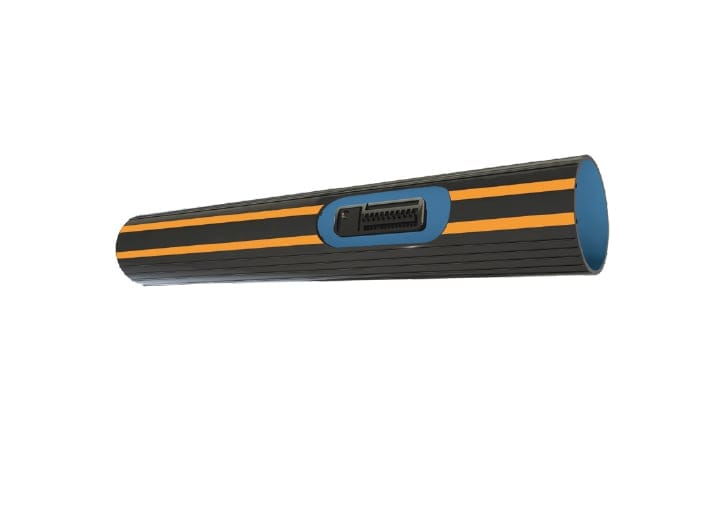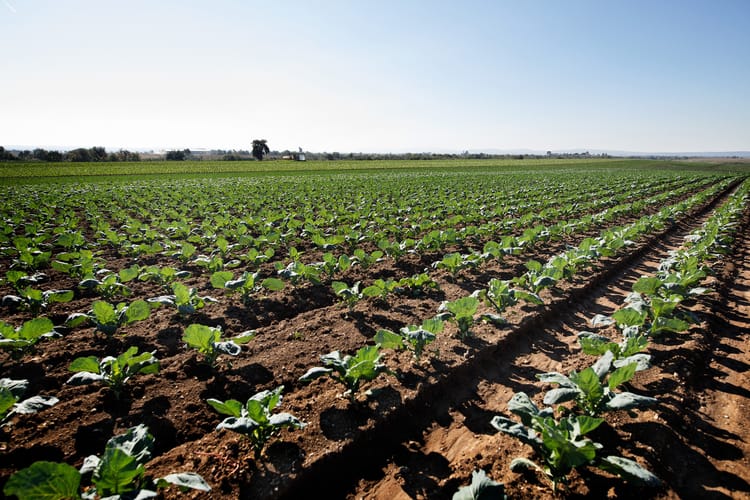Thin wall driplines for thicker wallets
Thin wall driplines are defined as driplines with a wall thickness of 0.4 mm or less. The selection of suitable wall thickness for the driplines to be installed, will be influenced by a variety of factors. The farmer and irrigation designer must, based on the operative and economic considerations, decide on the best dripper and associated wall thickness for the job.
Another important consideration, mostly determined by the crop in question, is whether the driplines and other equipment will be used for a single season or multiple seasons.
Thin wall driplines are specifically aimed to be used for one to three seasons on vegetables and certain field cash crops. These driplines are also perfectly suited for temporary installation for strip wetting for germination.
Advantages of single season use of driplines include:
- Lower rand per hectare input cost.
- Can be installed at approximately a third of the cost of more permanent dripline solutions.
- You start every season with a new dripline, lowering the chance of pathogen spread and ensuring optimal dripline function every season.
- Water quality limits may be relaxed somewhat, as the drippers only need to last a single season.
- Lower operational cost as very little maintenance is required, and installation and retrieval are faster and less labour-intensive.
- Can be recycled.
Dripper complexity and cost
As mentioned, dripper and dripline selection takes into account a variety of factors, each of which is an attribute that the irrigation designer or farmer must deem necessary for the crop and circumstances or not. The purpose being to maintain a balance between dripper cost and performance.
It is easy to be deterred by the cost of the most complicated drip irrigation solutions. We have to however remember that equipment cost is a sliding scale determined by a host of factors and that a comprehensive portfolio of drippers and driplines that cover a wide range of crops and applications is available.
Consider a dripline selection graph where the y axis is cost and the x axis is application, durability, clogging resistance and other factors considered in dripper comparison. Of course, movement along the x axis will result in movement along the y axis, that is an increase or decrease in price.
We must remember the following truth about drippers:
The bigger, the better.
The bigger the filtration area, the better the filtration and clogging resistance. The higher the turbulence in the flow path, the better the clogging resistance. Higher turbulence is gained by a wider, deeper and shorter labyrinth. Remember, the life of the dripline is only as long as the dripper needs to drip.
We however also have to remember this dripper truth:
The bigger, the more complicated, the more expensive.
The same is true for wall thickness. The thicker the pipe wall, the more durable the pipe is, but the more plastic it requires and the more expensive it will be. A thinner wall thickness will make the dripline much cheaper but will open it up to a higher occurrence of dripline damage.
A big, advanced dripper meant to last a long time, will therefore go into a heavy wall dripline with suitable durability. At the other end of the spectrum, a small dripper which is more likely to get clogged and is only purposed for a single season, will be welded into thin wall dripline. Part of a dripper’s specification is whether it is to be used in thick, medium or thin wall pipe.
You get what you need
The question is: what does your crop need and what do your circumstances allow? The experts would, for example, not recommend the same equipment for irrigation with hard, murky water for a single season as for irrigation with the same water where the equipment needs to last many seasons. Similarly, the same equipment will not be used for irrigation with much better water quality.
If the attributes of advanced heavy wall driplines aimed at multi-seasonal use is more than your crop needs and your circumstances allow, these driplines becomes a waste of money and labour. Something that cannot be afforded in modern farming, where efficiency is crucial to survival. As mentioned, thin wall driplines can lead to significant cost savings when some attributes are no longer crucial. Remember, we don’t need a 4 x 4 in the city!
If you choose single use, choose the best there is:
It is important not to veer from quality when moving to the lower range of drippers and driplines. Streamline™ X is the toughest thin wall dripline ever made and offers optimal irrigation for seasonal crops. The dripline has been created external ribs across the circumference of the pipe and two internal ribs thicken the dripper welding area protecting the dripper from damage during installation and throughout the season. The aim of the design of the dripline is to make it as tough and robust as possible.
Streamline™ X incorporates superior dripper technology using the trademarked TurboNet™ labyrinth as well as a deeper, wider and shorter flow path and a larger filtration area than competing products.



Share your thoughts
Comments
We'd love to hear your thoughts! To enter a comment, type your name and email address.